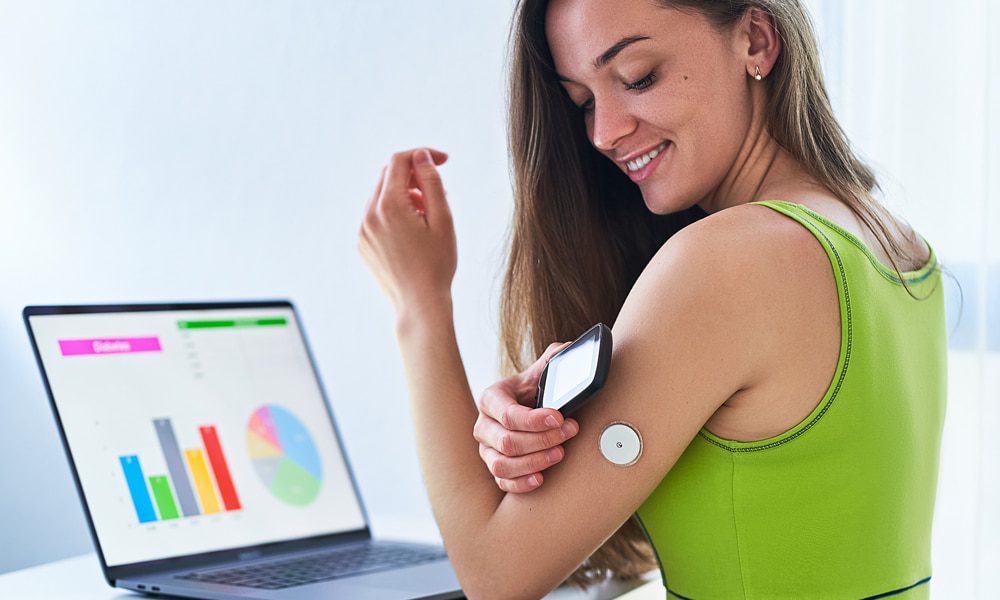Use of wearable health monitors is on the rise as preventative care is becoming more important than ever in the healthcare industry. Remote patient monitoring tools like glucose monitors, cardiovascular monitors and new all-purpose health monitors can capture real-time, medical-grade data to share with physicians and members of a patient’s care team. These highly specialized devices need to be able to collect precise data from just below the skin without interference or data contamination caused by the device’s adhesive. That presents a significant challenge to device manufacturers and product developers. Let’s take a closer look at how the industry is changing and what medical device manufacturers need to consider to develop successful wearable medical health monitors.
Innovations in wearable health monitors
Wearable health monitors have progressed significantly in recent years thanks to technological advancements, particularly in 3G and 4G technology (and soon 5G). Medical devices like constant glucose monitors (or CGM), ECG monitors and stickers that monitor biomarkers are now more lightweight, low profile and are able to provide more in-depth analysis of patient data. These characteristics have made these products popular with both patients and practitioners alike, and even as they’ve gained widespread adoption, there is still significant room for growth in the wearables market.
As they say, the only constant is change, and there have been several recent developments that may move the industry toward even more advanced stick-to-skin wearable health monitors. In February of 2021, researchers at the University of California San Diego announced they had created a new stretchable stick-to-skin patch that acts as an all-in-one health monitor. The device can track not only a user’s vital signs, but also glucose, lactate or caffeine levels. According to the press release, it is “the first wearable device that monitors cardiovascular signals and multiple biochemical levels in the human body at the same time.”
Also in 2021, a team in Japan announced their own new “ultra-thin, lightweight e-skin” that can monitor vital signs and was specifically designed for the needs of older users. The flexible material is made using polyvinyl alcohol and a layer of gold and is applied to the chest using water. The device can be worn up to 10 days without causing damage to the user’s skin.
It remains to be seen how quickly medical device manufacturers may adopt some of these new techniques and applications. But the demand for continuous remote monitoring isn’t going away and experts project sizeable market growth over the coming years. That means there is significant opportunity for manufacturers of all types of wearable medical health monitors.
Considerations for medical device manufacturers
The key to innovation in this space is finding adhesive solutions and medical tapes that facilitate strong device performance while providing optimal user comfort. That means product developers have to account for things like:
Wear time – Some wearable health monitors are intended to be worn continuously for 10 to 30 days, or even longer in some cases. Tapes and adhesives need to be strong enough to maintain hold throughout the intended wear time without damaging the skin.
Biocompatability – Product developers need to consider not only biocompatibility in the traditional sense of toxicity and immunological responses, but also user comfort. Manufacturers need to ensure the tape or adhesive doesn’t irritate or damage the skin, particularly during the removal process.
Application and removal process – Does application require water or another agent to activate the bond? Can the product be removed by the user themselves, or will they need professional medical assistance? The tape or adhesive you choose will have a major impact on patient autonomy and the practical application of your device.
Additional adhesives – Active individuals may want to add their own tapes or adhesives to help ensure their wearable health monitor stays in place. Medical device manufacturers may want to offer guidance to customers on which adhesives and tape solutions are both safe and compatible for use with their products.
The future of healthcare
Wearable health monitors offer convenience and continuous monitoring that helps prevent medical issues and create better health outcomes for patients. And that’s why they’re here to stay. As new technology drives innovation, medical device manufacturers are finding new ways to capture and analyze vital patient data in the home or a clinical setting.
But product performance will ultimately come down to the tapes and adhesives used to adhere the device to the body. By partnering with a medical tapes and adhesives converter that can provide expert guidance on materials selection and converting services to help you streamline the manufacturing process, you can create innovative products and keep your organization at the leading edge of the healthcare and medical device industry.
Looking for a full-service tape converter and adhesives specialist? Contact The Tape Lab today and see how we can put our full suite of converting services to work for you.
